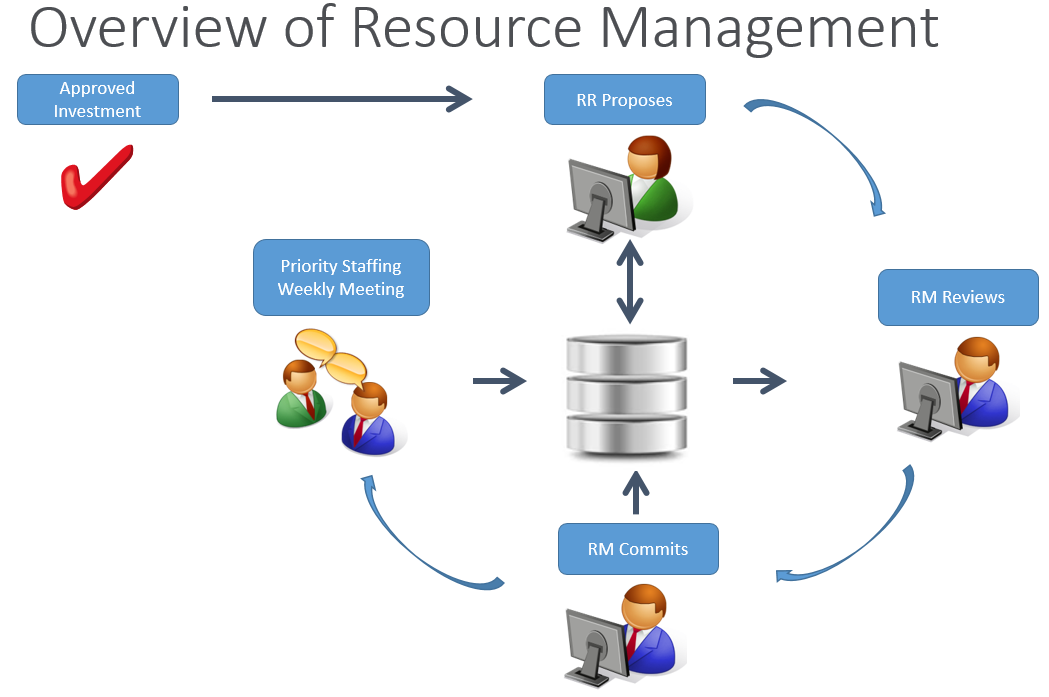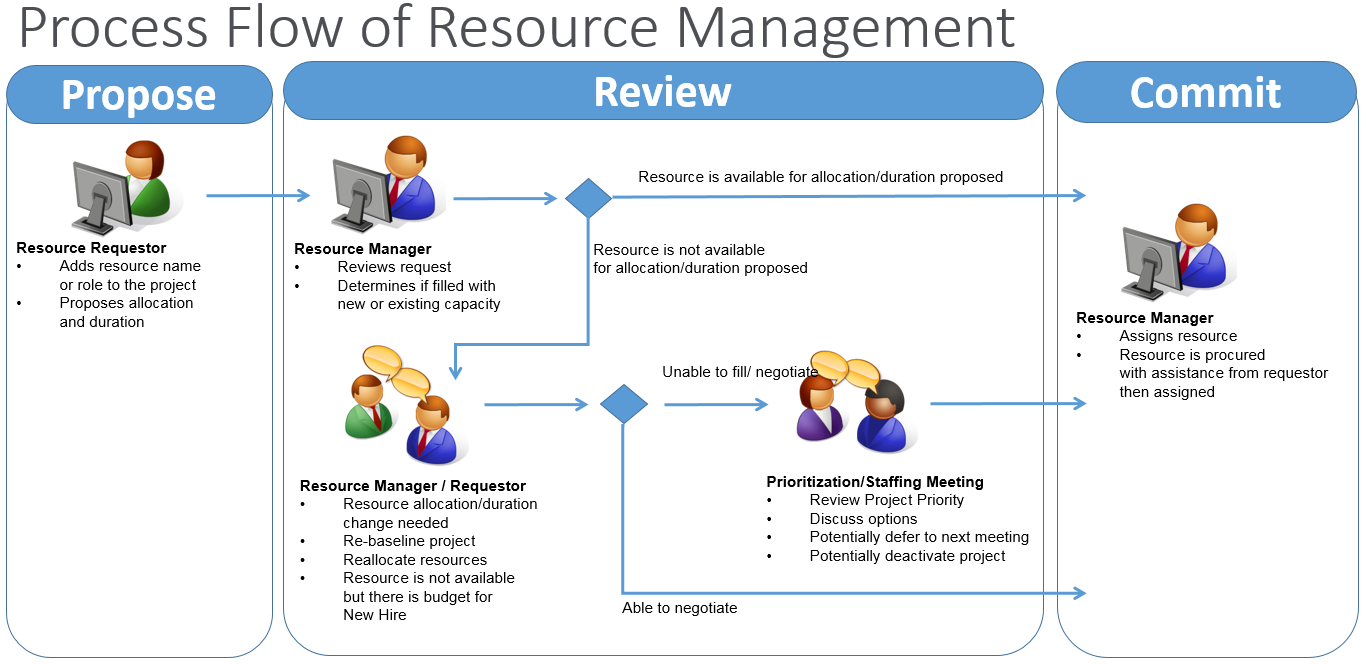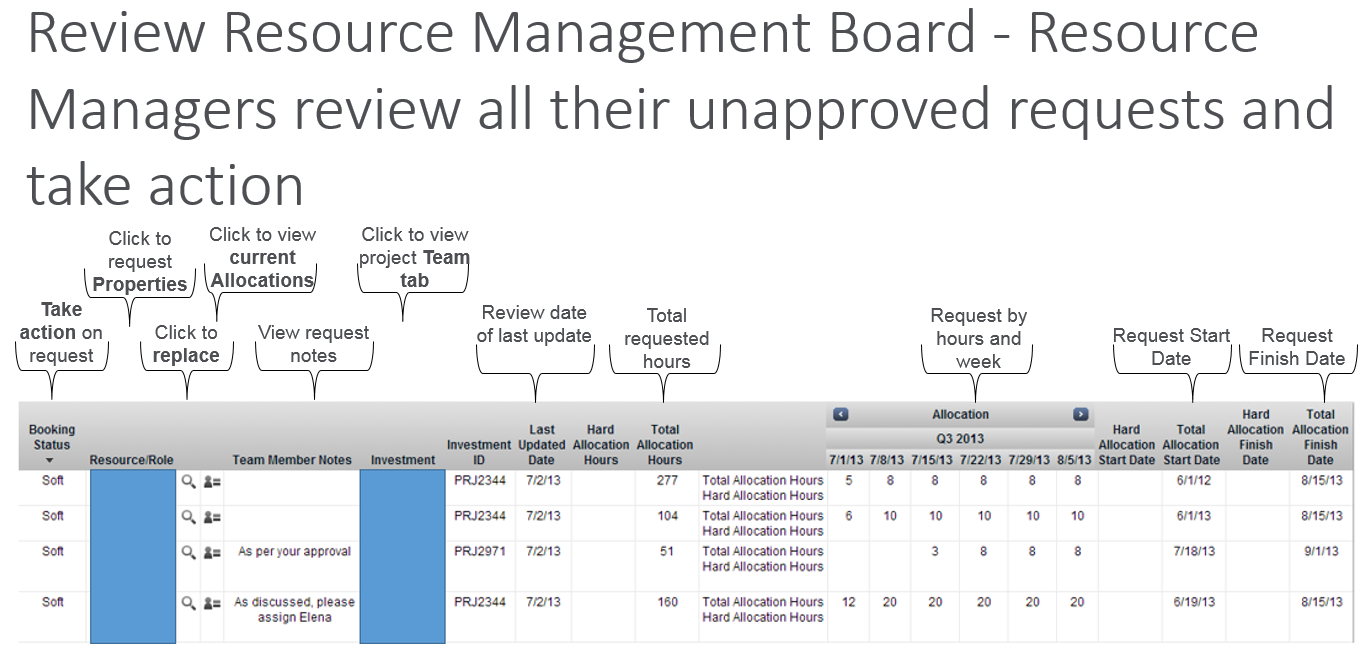Hello fellow PPM Practitioners! This is the first in a series of posts about CA PPM’s current and future resource management capabilities, focusing on best practices I’ve seen as a customer and CA Services Architect. Each organization’s environment and requirements are unique, but whether you are starting, maturing, or just barely surviving your resource management efforts, these concepts can help you alleviate pain and move solutions toward desired value outcomes. As in my , I try to distill the conversation to it's simplest form.
1. Resource management entails many actors, so it requires consistency and transparency in communicating the process, as shown in this top-level view. A Project Manager or Resource Requester (RR) submits a request, a Resource Manager (RM) reviews and takes action, and lastly, all attend a priority staffing meeting to address escalations.

2. A major pain of resource management is the investment in effort to provide data that translates into insightful decision making. One way to ensure the right data is to define a strong cadence. Below is a weekly schedule in which Project Managers and Resource Requestors submit requests on Monday through Wednesday and Resource Managers log into their defined view on Thursday to make decisions. On Friday, the system is updated and an escalation meeting is held. A weekly schedule like this takes the work out of work because it requires an activity only once a week—no more managing resources on a daily or even hourly basis.

3. When communicating to all actors,providing use case terminology such as “Propose,” “Review,” and “Commit” aids in adoption. There are a number of sub-processes and decision points, but keeping the concepts at a higher level helps users gain a baseline understanding and provides a common language and holistic view of what we’re trying to accomplish.

4. Configure one-stop shops to drive all processes and streamline related activities to a single, low-click location in the tool. By tying the system to the process, PPM Practitioners can greatly increase intuitiveness and lessen effort. Several usability concepts are incorporated here, but what this is really doing, is adding “bumpers” to the user experience that efficiently guide them through the system. In the Resource Management Board below, a user can make nearly every required decision and action via inline editing, pop-ups and top-down views. Whenever possible, set home pages and pre-set filters in your environment, because they help us deliver the fastest way to do the job while enabling data quality. No more clicking around and searching!

5. Lastly and most importantly is to enforce policy. I have often seen a process and system implementation where the initial “bang” is successful, but then oversight quickly fades away and data quality diminishes. This starts a death spiral of “the data is no good, so I can’t use it” and “why should I update the data when it’s never used?” To stop this trajectory, we must enforce agreed-upon procedures and consistently search for ways to improve. In an earlier post "PPM Insights: Surviving-to-Thriving, Delivering Resource Management, Improving Poor Data to Achieve Rich Outcomes," I talk about data quality, and how reporting on data updates via a multi-user process results in the weakest link dictating the value. We Practitioners may not own the process or the data, but we need to enforce data quality with audits, health measurements and a lot of guidance/support. Basic health metrics that I start with are:
- % open requests
- % over/under allocation threshold
- allocation vs. actuals
From this starting point, we can build towards optimizing resources and role demand to maximize priority items and forecast the skills that will give us the highest ROI . . . I cannot highlight governance enough, from any stage of maturity or solution success, as it is the only way to ensure ongoing value.
For readers interested in more detail, check out DocOps and my Blog Series. I encourage you to participate in the best-in-class site, where we have access to our peers, events and support. You can also reach out to CA Services for individualized business outcome references and analysis. Feel free to post in the comments section of this blog or contact me directly via email and @PPMWarrior.